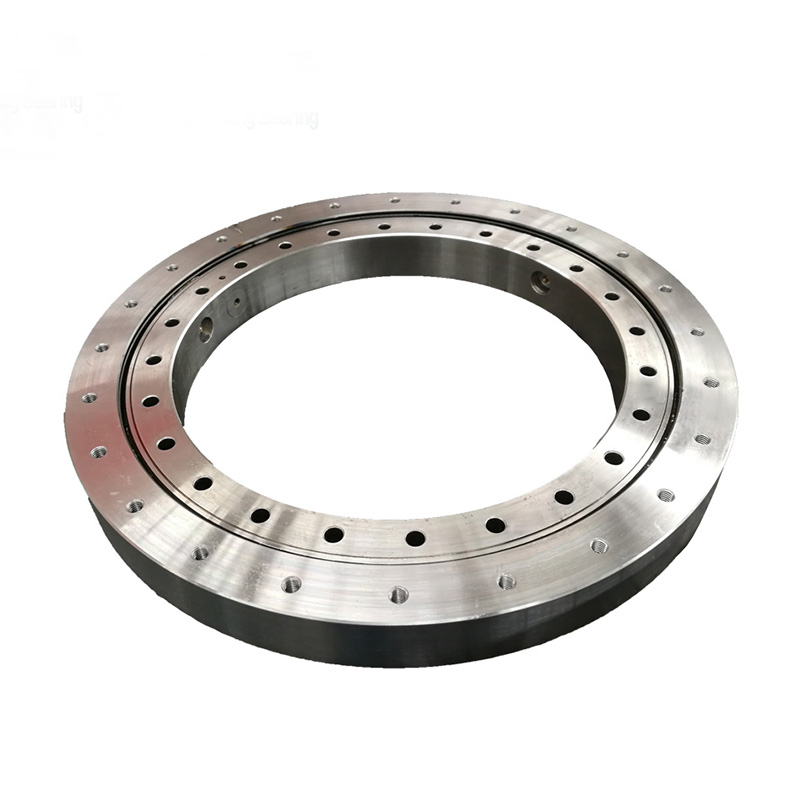
Non Gear Slewing Bearing
Non Gear Slewing Bearing
Within the Three Row Roller Slewing Bearings category, you'll find the option for non-gear designs. These bearings function similarly to their geared counterparts, offering exceptional load capacity and smooth rotation in a compact design. However, unlike geared slewing bearings, the non-gear version omits the integrated gear teeth. This makes them ideal for applications with a separate drive mechanism to achieve rotation, providing more flexibility in your overall system design. Non-gear three-row roller slewing bearings are particularly useful when high load support and precise movement are required, such as in construction cranes, excavators, and other heavy machinery. They also find applications in robotics, material handling equipment, and solar tracking systems. Design and Construction: Non-gear three-row roller slewing bearings share the core design principles of their geared counterparts. They consist of a robust inner ring and outer ring, typically made of high-strength steel alloys. In between these rings sit three rows of cylindrical rollers arranged in a way that optimizes load distribution and minimizes friction
Benefits of Non Gear Slewing Bearing
- Design Flexibility: The absence of integrated gear teeth allows for more design freedom. You can choose a separate drive mechanism best suited to your needs, such as a pinion and rack, belt drive, or direct drive motor. This flexibility enables engineers to optimize the overall system design for speed, torque, and space constraints.
- Simplified Maintenance: Non-gear bearings have a more straightforward design without gear teeth. This translates to easier maintenance and inspection. There are no gear components to wear or require mesh adjustment, potentially reducing downtime and maintenance costs.
- Lower Noise Operation: Geared slewing bearings can generate noise from teeth meshing. Non-gear designs eliminate this noise source, making them ideal for applications where noise reduction is a priority, such as in medical equipment or robotics for indoor environments.
- Potential for Higher Load Capacity: In some cases, non-gear designs can slightly increase load capacity compared to geared versions. This is because the space typically occupied by gear teeth can be utilized for additional rolling elements, like rollers, which can enhance the bearing's ability to handle heavy loads.
- Reduced Weight: By eliminating the gear teeth, non-gear bearings can be slightly lighter than their geared counterparts. This can benefit weight-sensitive applications, such as mobile equipment or robotics, where weight reduction is desirable.
